I always base my code on the following. This is a code once made which I now alter where necessary. Maybe you will find it usefull as well.
table2.10 <- cbind(lower=c(0,2.5,7.5,12.5,17.5,22.5,32.5,
47.5,67.5,87.5,125,225,300),upper=c(2.5,7.5,12.5,17.5,22.5,32.5,
47.5,67.5,87.5,125,225,300,Inf),freq=c(41,48,24,18,15,14,16,12,6,11,5,4,3))
loglik <-function(p,d){
upper <- d[,2]
lower <- d[,1]
n <- d[,3]
ll<-n*log(ifelse(upper<Inf,pgamma(upper,p[1],p[2]),1)-
pgamma(lower,p[1],p[2]))
sum( (ll) )
}
p0 <- c(alpha=0.47,beta=0.014)
m <- optim(p0,loglik,hessian=T,control=list(fnscale=-1),
d=table2.10)
theta <- qgamma(0.95,m$par[1],m$par[2])
theta
One can also create a 95% confidence interval by using the Delta method. To do so, we need to differentiate the
distribution function of the claims F^(−1)_{X} (0.95; α, β) with respect to α and β.
p <- m$par
eps <- c(1e-5,1e-6,1e-7)
d.alpha <- 0*eps
d.beta <- 0*eps
for (i in 1:3){
d.alpha[i] <- (qgamma(0.95,p[1]+eps[i],p[2])-qgamma(0.95,p[1]-eps[i],p[2]))/(2*eps[i])
d.beta[i] <- (qgamma(0.95,p[1],p[2]+eps[i])-qgamma(0.95,p[1],p[2]-eps[i]))/(2*eps[i])
}
d.alpha
d.beta
var.p <- solve(-m$hessian)
var.q95 <- t(c(d.alpha[2],d.beta[2])) %*% var.p %*% c(d.alpha[2],d.beta[2])
qgamma(0.95,p[1],p[2]) + qnorm(c(0.025,0.975))*sqrt(c(var.q95))
It is even possible using the parametric bootstrap on the estimates for α and β to get B = 1000 different estimates for the
95th percentile of the loss distribution. And use these estimates to construct a 95% confidence interval
library(mvtnorm)
B <- 10000
q.b <- rep(NA,B)
for (b in 1:B){
p.b <- rmvnorm(1,p,var.p)
if (!any(p.b<0)) q.b[b] <- qgamma(0.95,p.b[1],p.b[2])
}
quantile(q.b,c(0.025,0.975))
To do the nonparametrtic bootstrap, we first ‘expand’ the data to reflect each individual observation. Then
we sample with replacement from the line numbers, calculate the frequency table, estimate the model and its
95% percentile.
line.numbers <- rep(1:13,table2.10[,"freq"])
q.b <- rep(NA,B)
table2.10b <- table2.10
for (b in 1:B){
line.numbers.b <- sample(line.numbers,size=217,replace=TRUE)
table2.10b[,"freq"] <- table(factor(line.numbers.b,levels=1:13))
m.b <- optim(m$par,loglik,hessian=T,control=list(fnscale=-1),
d=table2.10b)
q.b[b] <- qgamma(0.95,m.b$par[1],m.b$par[2])
}
q.npb <- q.b
quantile(q.b,c(0.025,0.975))

